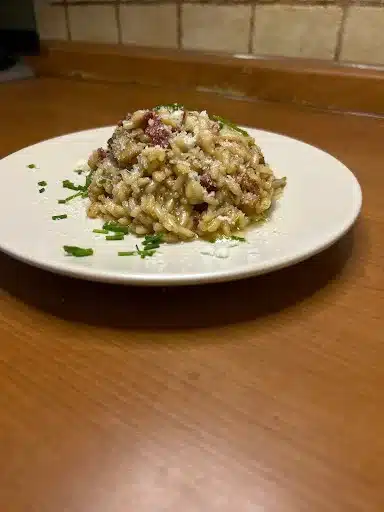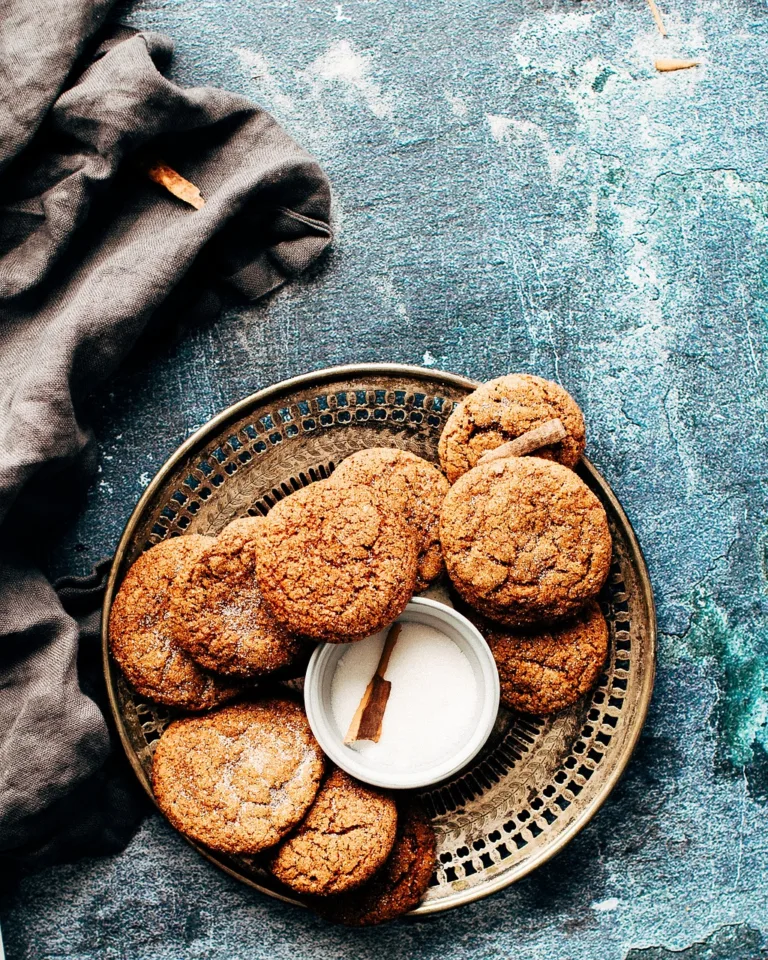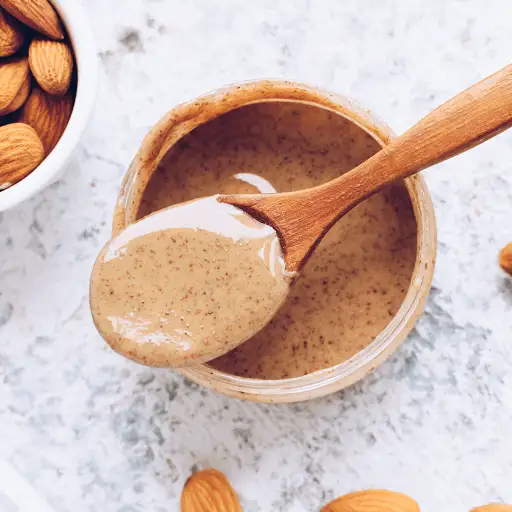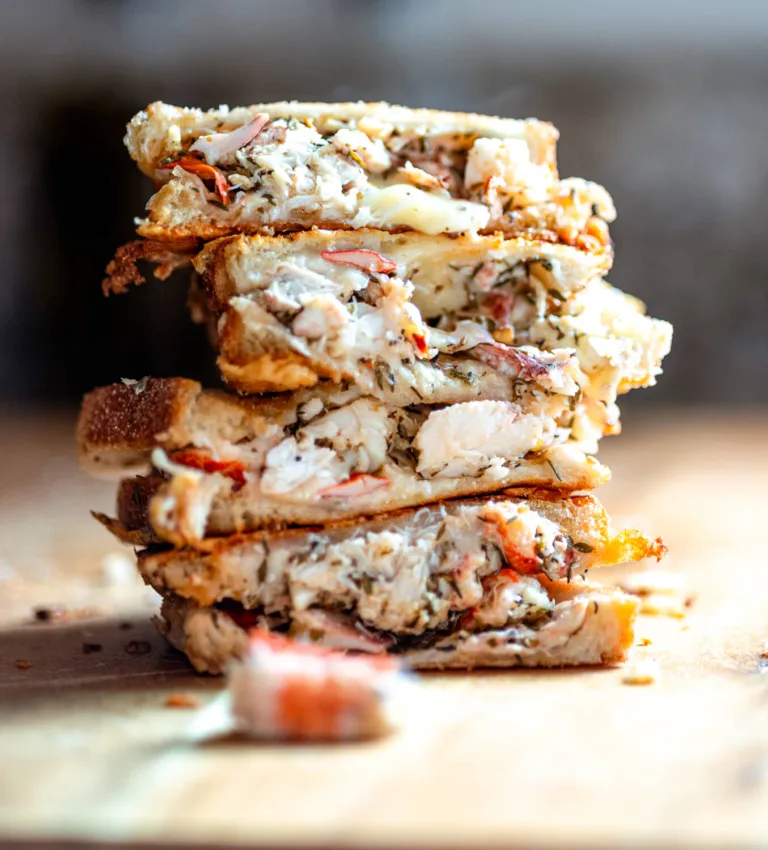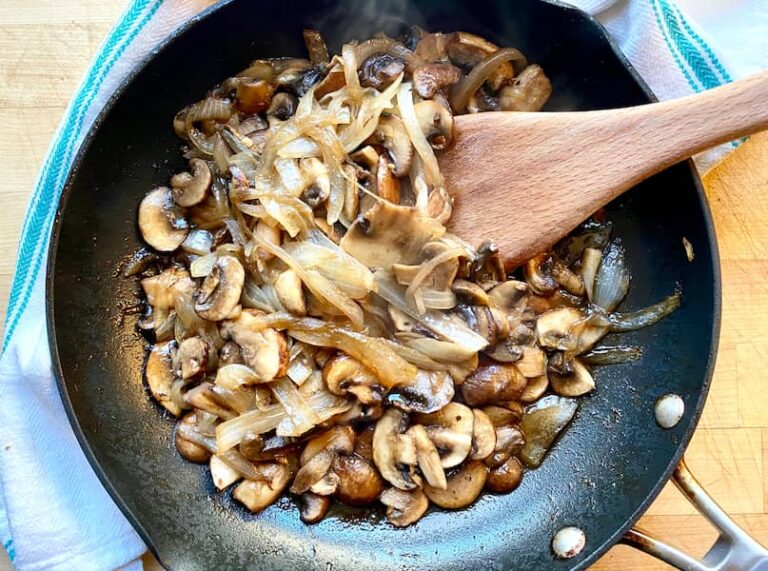The fall’s arrival calls for hearty dishes. You know, those warm, succulent meals capable of making the room instantly more cozy. And as the days get shorter and temperatures drop, few foods can achieve that better than a creamy risotto.
If you feel the same way and are looking for some inspiration, let me show you my bacon risotto recipe with champignon mushrooms. I’m sure it will make it into your weekly rotation!
This dish is perfect as a weekend meal from September through March, but if you have 40 minutes to spare you can also enjoy it on midweek nights after work. Picture yourself all cozied up under a fleece blanket, enjoying the savory bacon mixing up with the earthy, fleshy mushrooms while watching the rain fall outside the window!
As with most Italian recipes, this dish is not difficult to make, but it does require some attention. Below, I’ll show you how to make it perfectly step by step, and explain which rookie mistakes to avoid.
Bacon Risotto: Main Ingredients
Traditional risotto is typically made with arborio rice, onions, white wine, meat broth, butter, saffron, and parmesan cheese. This bacon risotto recipe, on the other hand, is a little different. Here’s everything you’ll need.
Carnaroli rice: although many people like to use arborio rice for their risotto, I think Carnaroli or Vialone Nano rice are better choices. They are both higher in starch and amylose, which will make your risotto silkier and creamier. Also, they are harder to overcook than arborio rice and can stay in the pan for longer, absorbing all the tasty flavors of the other ingredients.
Fresh mushrooms: this time I went with champignon mushrooms, but porcini are also a great choice for this recipe! Whatever you choose, make sure to buy them either whole or ready-to-use. The reason is that you want them to absorb as little water as possible. If they’re already sliced but unwashed, you’ll need to rinse them, and it could ruin their taste. On the other hand, if you bought whole mushrooms, you’ll be able to wash them with a wet cloth and later chop them.
Bacon or pancetta: a few pieces of savory bacon can make everything more delicious. Alternatively, a few strips of pancetta will totally do the trick!
Vegetable broth: I think meat broth works best with other risotto recipes. For this one, use vegetable broth instead. I made one with onions, carrots, celery, rosemary, and cloves.
Butter and olive oil: This time, we’ll be using both. Butter will be the fat base on which to sautee the vegetables, but we’ll also add a drizzle of extra-virgin olive oil for flavor.
Freshly grated parmesan cheese: You will use it at the very end of the making process, for the part known as “mantecare il riso”.
White wine: It will add a little bit of acidity, making your risotto tastier and stimulating your guests’ appetite.
Chives & parsley: I think these two are the best herbs to use for bacon and mushroom risotto. But don’t use the dry ones that come in flasks! Buy them fresh, and chop them finely as soon as you need them.
Red onions: For this bacon risotto recipe, I used a Tropea red onion. However, I think using fresh, local vegetables is always the best choice. If you are reading this blog, chances are you live across the pond from me. So my advice is to go to your trusted grocery store and choose the freshest red onions you can find. 😉
Compared to traditional risotto, this bacon and mushroom risotto recipe has a few more ingredients. I even tried to add a little saffron to see how it tasted, but I didn’t like the final result, so I didn’t include it in the recipe card below this post.

Bacon Risotto Recipe: Step-by-Step Instructions
This recipe is divided into three steps:
- cooking the bacon;
- cooking the mushrooms;
- making the risotto;
Let’s see how to perform each of these steps correctly. You will need a large pan or wok, in which you will cook all the ingredients separately and then set them aside.
Cooking the bacon
Put a trickle of water inside the pan, then place it on the stove and turn the heat on. While the water heats up, cut the bacon into thick strips and add them to the pan. The heat of the water will cause the pores of the meat to close up, ensuring that at the end of cooking it will be crispy on the outside while remaining a little juicier on the inside. You won’t need to add olive oil or butter: the bacon fat will grease the pan as it melts.
As soon as the meat begins to seal, add half a glass of white wine to deglaze. Then, continue cooking on medium heat until the meat takes on the typical brown color of a well-cooked bacon.
→ If you are not very handy with meat, here is a detailed guide on how to tell if bacon is ready!
When the time comes, take the meat out of the pan with a slotted spoon and set it aside on a paper towel-lined plate.
If you don’t want your risotto to be overly fatty, you can toss away half the bacon fat. Just remember to keep some, because you will need it later to toss and cook the other ingredients.
Cleaning and cooking the mushrooms
When cooking champignon mushrooms, many people make two huge mistakes: rinsing them under running water, and cooking them too long. As a result, they lose most of their flavor, texture, and chew.
Here’s what you should do instead.
Let’s start by cleaning them. All mushrooms absorb water very easily. This makes them excessively soft and spongy. Therefore, it is best to use as little water as possible.
In the case of champignon mushrooms, the best way to clean them is as follows:
- Start by removing the lower part of their stem. Then pull the skin off the cap with a small knife and a sharp motion.
- Lightly rub each mushroom with a damp cloth. This will remove the last bits of soil and dirt.
Next, use a sharp knife to cut the mushrooms into the shape you prefer.
As for cooking, champignon mushrooms should be sautéed for no more than 2-3 minutes.
Add them on a single layer to the same pan you used for the bacon and let them cook undisturbed for the first two minutes on gentle heat. Then stir them a little to make sure they brown on all sides.
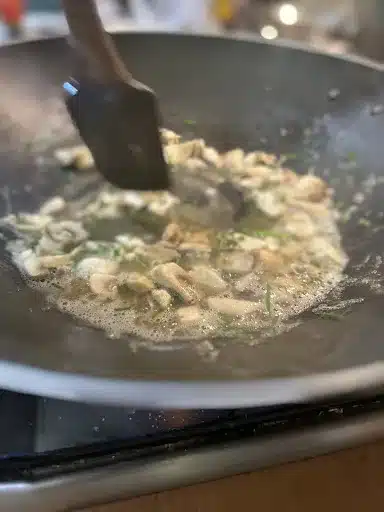
Making The Risotto
Now, the trickiest part.
Many people think that to make risotto you just throw the rice into a pot full of water and wait until it is ready. But if you do it this way, your risotto will end up being mushy and textureless.
To make it nice, you will have to use a technique called risottare.
I have already shown this technique in other recipes such as my farro risotto, or my bucatini with cabbage pesto.
It will allow you to use the starch naturally present in rice to create a cream that will bond with the fat in the other ingredients, giving your risotto its typical creamy texture while keeping the rice al dente.
First, add half the butter and a drizzle of oil to the pan you’ve been using so far, finely chop the onion, and saute it until it turns golden brown. When it is ready, set it aside on a small plate. This way, you will avoid burning it while cooking the rice.
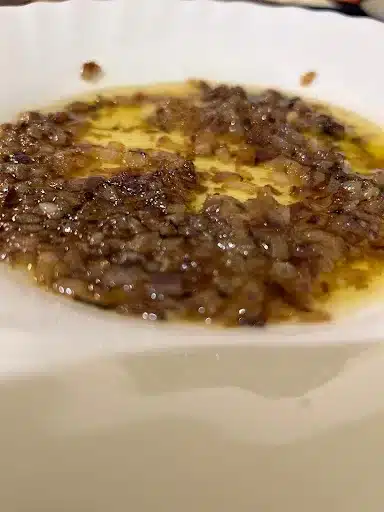
Now, rinse the pan and dry it roughly with a paper towel. Then, add the rice and spread it evenly on the surface of the pan. Let it toast for about a minute on low heat. To know when it is ready, raise one hand above the pan. If you feel the heat coming on, it means it is time.
Take a glass of wine, pour it over the rice, and turn up the heat.
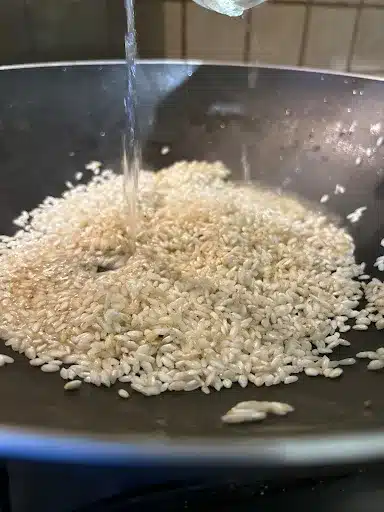
When the wine has been absorbed by the rice, add some of the broth.
It is important that you do not pour it all at once: start with just enough broth to cover the surface of the rice, wait for it to be absorbed, and then add 2 or 3 ladles at a time.
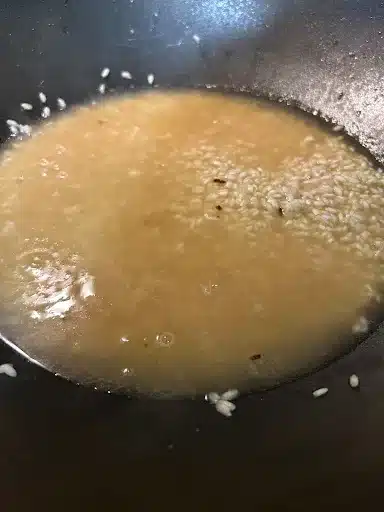
Keep doing this for about 15 to 20 minutes, tasting the rice often to check that it doesn’t overcook. During the last few minutes of cooking, add the onion, mushrooms, crispy bacon, and some coarsely chopped chives and parsley leaves.
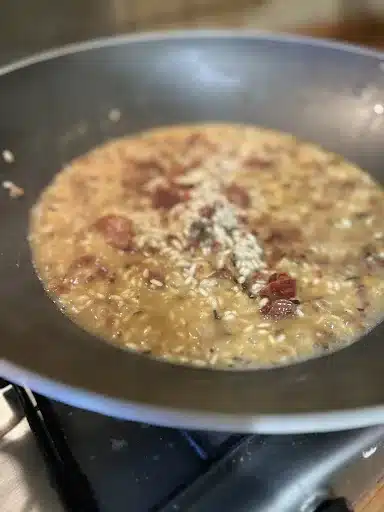
When the rice is al dente, wait until it finishes absorbing the last remnants of warm broth, and then remove the pan from the heat.
It’s time to perform the last step: mantecare il riso!
In Italian, mantecare means to mix the ingredients together so that the dish becomes creamier. This is achieved by adding some butter and a little Parmesan cheese to the pan, covering with a lid, and letting it sit for about 5 minutes. The fat in the dairy products will bind with the starch in the rice and give the risotto its final texture.
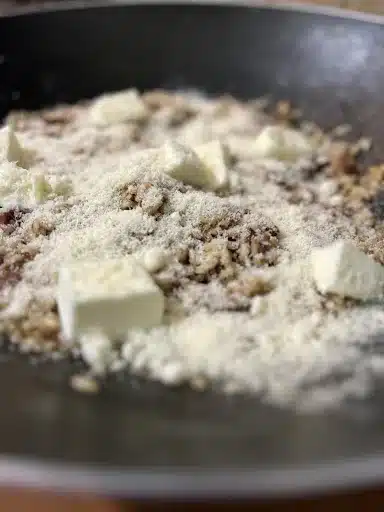
Once the required 5 minutes have passed, stir one last time, and voilà: you can finally serve your bacon & mushroom risotto with an extra sprinkle of Parmesan cheese and fresh chives.
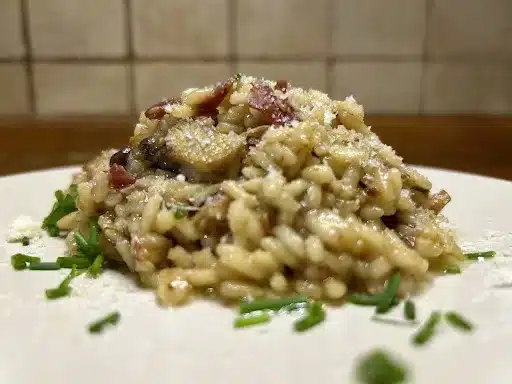
It takes a while to make this dish, but I assure you it’s really worth it. Its delicious, comforting flavor will keep you cozy for many evenings this fall!
To help you make it anytime you want, here’s a handy recipe card with all the ingredients and step-by-step instructions. You can adjust the amount of the ingredients according to the desired yield, and use it as a checklist for when you go grocery shopping.
If you liked this recipe, let me know in the comments and leave a review. I’d like to know what you think of it.
And remember, make it nice!
Print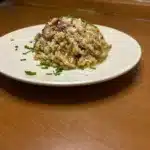
The best risotto with bacon and mushrooms
5 Stars 4 Stars 3 Stars 2 Stars 1 Star
No reviews
- Author: Mortadella Head
- Total Time: 45-50 Minutes
- Yield: 4 1x
Ingredients
3 cups Carnaroli or Vialone Nano rice
7 oz Champignon mushrooms
8 oz bacon
1 stick butter
6 cups vegetable broth
a drizzle of extra-virgin olive oil
a drinking glass of white wine
fresh chives & parsley to taste
1 red onion or a leek
Instructions
Step 1: Cooking the Bacon
- Add a small amount of water to a large pan or wok and place it on the stove over medium heat.
- While the water heats up, cut the bacon into thick strips and add them to the pan. The heat from the water will seal the bacon, creating a crispy exterior while retaining some juiciness inside. No additional olive oil or butter is needed as the bacon fat will naturally grease the pan as it melts.
- Once the bacon starts sealing, deglaze with half a glass of white wine and continue cooking over medium heat until it turns brown.
- Remove the cooked bacon from the pan using a slotted spoon and set it aside on a paper towel-lined plate. You can discard half of the bacon fat, but keep some for later use.
Step 2: Cleaning and Cooking the Mushrooms
- Start by removing the lower part of the mushrooms’ stem and peeling the skin from the cap with a small knife.
- Lightly rub each mushroom with a damp cloth to remove any remaining soil and dirt.
- Use a sharp knife to cut the mushrooms into your preferred shape.
- In the same pan used for bacon, sauté the mushrooms for 2-3 minutes, starting with gentle heat and stirring occasionally to ensure even browning.
- Set aside
Step 3: Making the Risotto
- Add half the butter and a drizzle of oil to the pan.
- Finely chop the onion and sauté it until it turns golden brown. Set it aside on a small plate.
- Rinse the pan and dry it roughly with a paper towel.
- Add the rice to the pan and spread it evenly, toasting for about a minute on low heat.
- Pour a glass of wine over the rice to add acidity and enhance flavor.
- After the wine is absorbed, gradually add the broth. Start with enough to cover the rice’s surface, wait for absorption, and then add 2 or 3 ladles at a time.
- Continue this process for about 15 to 20 minutes, tasting the rice to ensure it remains al dente.
- In the last few minutes of cooking, add the onion, mushrooms, crispy bacon, coarsely chopped chives, and parsley leaves.
- Once the rice is al dente and has absorbed the remaining broth, remove the pan from the heat.
- Perform the final step by adding butter and Parmesan cheese to the pan, covering it with a lid, and letting it sit for about 5 minutes to achieve the desired creamy texture.
- After 5 minutes, give it a final stir, and your Bacon and Mushroom Risotto is ready to be served! Sprinkle with extra Parmesan cheese and fresh chives for added flavor.
- Enjoy your comforting fall dish!
- Prep Time: 30 Minutes
- Cook Time: 15-20 Minutes
- Category: Main Courses
- Cuisine: Italian

